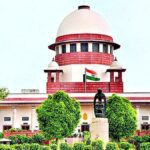In deciding an appeal filed in Ashoka Hi-Tech Builders Pvt. Ltd. v Sanjay Kundra & Anr., the National Company Law Appellate Tribunal (“NCLAT”), Principal Bench, comprised of Justice Ashok Bhushan (Chairperson) and Mr Barun Mitra (Technical Member), held that a landowner who is a party to a development agreement is not a financial creditor as defined by Section 5(8) of the IBC and is, therefore, ineligible to serve on the Committee. Section 5(8) of the IBC explains the meaning and components of “financial debt”. NCLAT while passing this order, cites the case of Namdeo Ramchandra Patil and Ors. v Vishal Ghisulal Jain. In this case note I will be analysing the concept of the time value of money and the reason behind it being a necessary element to become a financial creditor.
Circumstances of the case –
A development project was planned to be built by the Corporate Debtor on property owned by Ashoka Hi-Tech Builders Pvt. Ltd. (the “Landowner/Appellant”). This agricultural land had a total area of 11.40 acres. A Development Agreement dated 01.04.2009 was signed by the Corporate Debtor and the Landowner. According to the Agreement, the Corporate Debtor would continue construction, with the Landowner owning 32% of the total saleable construction and the Corporate Debtor owning the remaining 68%. The Landowner presented its claim to the Resolution Professional as a financial creditor and the same was acknowledged when the Corporate Debtor was admitted into Corporate Insolvency Resolution Process (CIRP). The Landowner was thus added to the Committee of Creditors (CoC). The Homebuyers then submitted a request to the Adjudicating Authority asking that the landowner be removed from the CoC because he is not a financial creditor. The Adjudicating Authority withdrew the Landowner from the CoC in a decision dated 3.11.2022, noting that the Landowner cannot be considered as a Financial Creditor because no money was paid for the time value of money.
NCLAT verdict –
The bench believed that the judgement rendered by this Tribunal in Namdeo Ramchandra Patil & Ors., which held that the Appellant is not a financial creditor, adequately addresses the issues at hand. The adjudicating authority also correctly referred to this judgement. According to the terms and circumstances of the development agreement signed by the appellant and the corporate debtor, the appellant was only a collaborator and not a financial creditor. According to Section 5(8) of the IBC, the appellant did not make any payments for the time value of money.
Analysis –
Disbursement against the time value of money is a requirement for a debt to be considered a financial debt, and any sum obtained from an allotment under real estate is also subject to Section 5(8) when we examine the provision of Section 5(8)(f) Explanation (i) and (ii)(f). The raising of a sum from the allottee is a prerequisite for the application of Explanation I of Section 5(8)(f). In the current instance, no money has been collected from the appellants, the landowner. The Appellant’s argument that they are allottees in accordance with Section 2(d) of the Real Estate Regulatory Authority Act does not qualify their transaction as a financial debt following Section 5(8)(f). When we examine Section 5(8)(f) Explanation (i) and (ii), it is evident that the payment against time value of money is a requirement for a debt to be classified as a financial debt. Section 5(8) also applies to any transaction in which money is obtained from an allotment under real estate. Raising money from the allottee is a requirement for applying Section 5(8)(f)’s explanation.
In the Namdeo case, no money has been collected from the appellants, the landowners. The appellant’s argument that they are allottees per Section 2(d) of the RERA Act did not qualify their transaction as a financial debt in accordance with Section 5(8)(f). When we consider the true nature of the transaction made between the Corporate Debtor and the Appellants – Landowners, we find that the landowners had a right to share the created area in a ratio of 45:55 and that the allocation of apartments and commercial spaces in lieu of their rights under the Development Agreement did not constitute a financial debt as defined by Section 5(8)(f).
The next part of Section 5(8)’s definition of “financial debt” is that a “debt” must be “disbursed” in exchange for consideration for time worth of money. Disbursement is the act of paying money, often out of a fund or in payment of a debt or account payable, as was taken into consideration in Pioneer Urban Land and Infrastructure Ltd. vs. Union of India. In this case, whereby the SC confirmed the constitutional legitimacy of the amendments, providing the homeowners with the status of financial creditors. The SC highlighted that the Time Value of Money is not just the consistent or prompt return obtained throughout the course of the amount paid, but would also be the value earned when the buyer makes advance payments (enabling the developer to raise funds for the building of the property) rather than making a lump sum payment for a completed home. The money saved in the process will be the time value of money, and the price the buyer would have to pay for a finished home would be far more than the advance payments made for financing the building. In the Ashoka Hi-tech case, the agreement said that the landowner owned 32% of the land, which means he has not invested money to get the return following the time value of money.
The case of Ashoka Hi-tech is yet another order by the Supreme Court after the Namdeo and Pioneer Urban case reiterating the concept of the time value of money as an essential element for the classification of financial creditors. The case highlights the difference between collaborator and financial creditor based on the development agreement and disbursement of the time value of money by the landowner as a differentiating factor between the collaborator and financial creditor.
– This article is written by Garvit Shrivastava, a second-year law student at O.P. Jindal Global Law School. His research interests lie in the area of Real Estate laws, corporate laws, Alternative Dispute Resolution, and Insolvency and Bankruptcy Laws.



